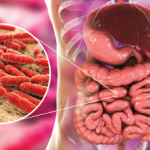Destruction of articular cartilage is often degenerative and leads to osteoarthritis (OA). Chondrocytes play an important role in cartilage repair as well as symptom relief. Research published in Science provides insights into the role of stem cell–based therapies in the promotion of chondrogenesis and cartilage repair.1
“This is very early-stage research, and much more scientific research needs to be accomplished,” said Kristen Johnson, PhD, of the Genomics Institute of the Novartis Research Foundation in an e-mail to The Rheumatologist. “Kartogenin was discovered from a screen to look for compounds that promote the differentiation of endogenous stem cells into chondrocytes. The number of the stem cells in cartilage increase in an injury. In a mouse model, addition of kartogenin after an injury resulted in appearance of more chondrocytes and matrix proteins and restoration of hyaline articular cartilage.”
The small molecule, kartogenin, was identified by the use of an image-based high-throughput screen of primary human bone marrow multipotent mesenchymal stem cells (MSCs). Kartogenin was subsequently evaluated on articular chondrocytes and found to both promote the selective differentiation of MSCs and be chondroprotective.
Pathophysiological tests revealed kartogenin to also be chondroprotective in two OA animal models. Specifically, kartogenin treatment resulted in a 50% reduction in joint score in an acute surgical model of OA.
A focused structure–activity relationship study suggested that kartogenin induces MSC differentiation via an association with filamin A (FLNA). FLNA regulates cytoskeletal network organization and dynamics by binding to and cross-linking actin. Kartogenin further induces chondrogenesis by regulating the interaction of the transcription factor core-binding factor β subunit (CBFβ) with its target.
In the resting state, CBFβ is bound to its cytoplasmic partner, FLNA, and is sequestered in the cytoplasm. Upon activation, it dissociates from FLNA, translocates into the nucleus, and binds the runt-related transcription factor (RUNX) family members, thereby regulating transcription. RUNX proteins are highly regulated by complex signaling networks in a way that correlates with their distinct roles in musculoskeletal development and maintenance. RUNX proteins therefore represent an intriguing target for OA drug development.
Dr. Johnson explained the future directions of her research, “Within Novartis Institutes for Biomedical Research, we are actively working to gain further understanding of how kartogenin functions and to determine the appropriate clinical indication to which it is best suited. Due to the very early-stage nature of this research, it is hard to predict timing of clinical entry or long-term outcome. However, we are working diligently on this program, and preclinical studies suggest we are moving in the right direction to help patients and address unmet medical need.”
